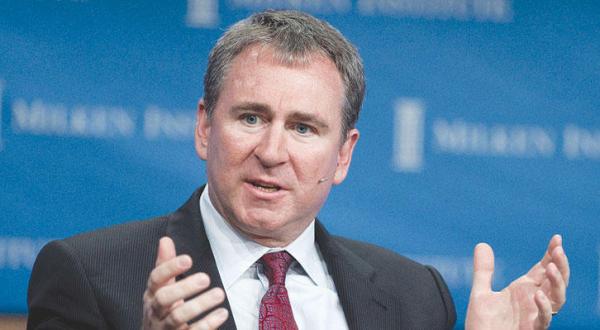New York- JPMorgan Chase paid its chief executive, Jamie Dimon, $27 million in 2015. In another Wall Street universe, the hedge fund manager Kenneth C. Griffin made $1.7 billion over the same year.
Even as regulators push to rein in compensation at Wall Street banks, top hedge fund managers earn more than 50 times what the top executives at banks are paid.
The 25 best-paid hedge fund managers took home a collective $12.94 billion in income last year, according to an annual ranking published on Tuesday by Institutional Investor’s Alpha magazine.
Those riches came during a year of tremendous market volatility that was so bad for some Wall Street investors that the billionaire manager Daniel S. Loeb called it a “hedge fund killing field.”
A few hedge funds flamed out; others simply closed down. Some of the biggest names in the industry lost their investors billions of dollars.
For the biggest hedge fund managers, these men, and the occasional women, have more money and more influence than ever before.
Their firms do more business in some corners of the financial world than many banks, including lending to low-income homeowners and small businesses.
They lobby members of Congress, and they have put large sums of money behind presidential candidates, at times pumping tens of millions of dollars into super Political Action Committees (PACs).
Moreover, the hedge fund industry has now ballooned in size, to $2.9 trillion, from $539 billion in 2001; so did the pay of the industry’s leaders.
When Institutional Investor first started ranking hedge fund pays 15 years ago, George Soros topped the Alpha list, earning $700 million.
In 2015, Mr. Griffin, who started trading as a Harvard sophomore out of his dorm room, and James H. Simons, a former math professor, each took home $1.7 billion, according to Alpha magazine; the two topped the list last year too.
Whereas Mr. Griffin’s firm, Citadel, has grown from a hedge fund that managed family and pension fund money into a $25 billion firm that has expanded into the securities business, taking business away from the brokerage units of banks like Morgan Stanley and Goldman Sachs.
Along the way, his own personal wealth has grown exponentially, and is estimated by Forbes at $7.5 billion.
He recently made headlines when he paid $500 million for two pieces of art. In September, Mr. Griffin, 47, reportedly paid $200 million to buy several floors in a new luxury condo tower that is being built at 220 Central Park South, in Manhattan, New York.
Nevertheless, it is arguably on the national and political scene where his money has had the most impact.
He was the biggest donor to the successful re-election campaign of Mayor Rahm Emanuel of Chicago. More recently, he has poured more than $3.1 million into the failed presidential campaigns of Marco Rubio, Jeb Bush and Scott Walker as well as the Republican National Committee.
In addition, Citadel’s flagship “Kensington” and “Wellington” hedge funds returned 14.3 percent over 2015.
For its part, Renaissance Technologies, the hedge fund firm started by Simons in 1982, uses computers to track and outsmart the stock market. It is a strategy that has worked well. The main Renaissance funds gained between 15.6 percent and 16.5 percent.
Notably, Simons, 78, has been a major political donor of the Democrats, donating $9.2 million in 2016, including $7 million to Priorities USA Action, a super PAC supporting Hillary Clinton.
Robert Mercer and Peter Brown, co-chief executives of Renaissance, also made the list this year, each earning $135 million in 2015.
Mercer emerged last year as a major donor to Ted Cruz’s presidential campaign, and he also gave to Bobby Jindal and Carly Fiorina, pumping $11.3 million into the election race.
To come up with its estimates, Institutional Investor’s Alpha calculates the gains on each manager’s capital in their funds in addition to their cut of the fees they charge. On average, investors pay an annual management fee of 2 percent of total assets under management and 20 percent on any gains.
